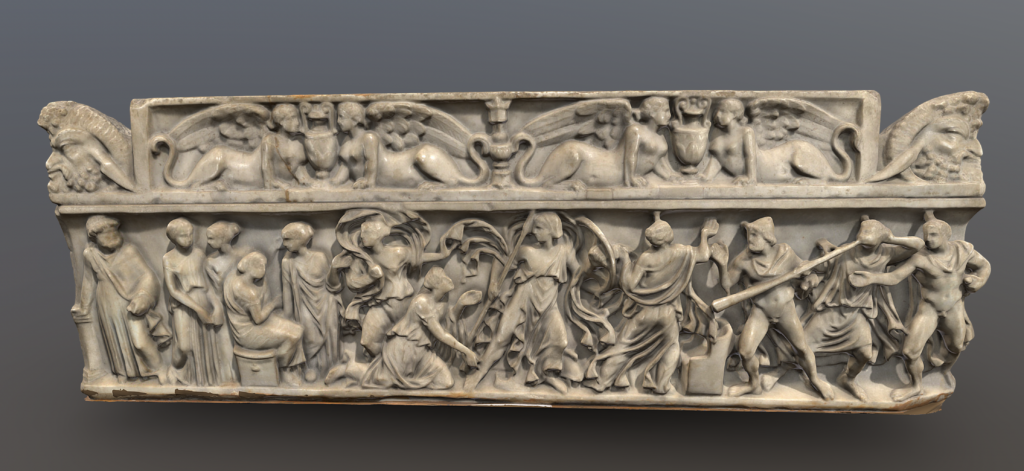Enjoy this article?
Most Museums Journal content is only available to members. Join the MA to get full access to the latest thinking and trends from across the sector, case studies and best practice advice.

Here, I share my experience exploring two of the Fitzwilliam Museum’s virtual galleries, Gallery 3 and Gallery 6, both of which were created using the build software Sketchup (see ratings box) and uploaded to the 3D assets website Sketchfab.
These digital re-creations aim to help the museum reach a wider audience and are accessible via its website. There are virtual versions of nearly all the real gallery spaces and some have the bonus of 3D scans of works too. The most accessible way to interact with these is by clicking through into each gallery section, but it would have been helpful to have clear instructions how best to navigate the spaces.
The virtual re-creation of Gallery 3, titled Fitz Favourites, impressed me on my first look. Sketchup’s user-friendly interface and realistic shadows and textures add visual depth to the virtual experience of being in the museum itself. However, the absence of interpretation with the artwork reduces the level of engagement possible.

Navigating the gallery on a laptop proved challenging and though you can get temptingly close to the artwork, you can’t zoom in.
Gallery 6 focuses on works made in early Renaissance Italy. I appreciated the digital labels, which state the title, artist and date, but there isn’t any lengthier interpretation or links to find out more.
The 3D photogrammetry of a marble sarcophagus was an amazing addition to the space, but the empty display cases in the centre of the gallery and the non-functional links to the next gallery disrupted the flow and left me feeling disoriented.
I find the software, Sketchup, user-friendly and the replica creation is good. However, when I’ve used it as an e-curator, I have found it is vital to be conscious of how you build your gallery – it is important to focus on the user experience, as there is a risk of focusing on details, adding benches or cabinets for the aesthetic, but by doing so you create a high polygon count that can result in lags.
To ensure inclusivity, the museum should add digital interpretation as well as comprehensive alt text – there is no alt text at the moment. This is essential, but you do need the paid-for pro versions of Sketchup and Sketchfab.
While these two galleries are successfully recreated to a basic digital level, the museum has missed opportunities to fully leverage the digital medium in its full array of accessible features. Fuller interpretation panels, working gallery links, alt text and being able to zoom into artworks would be a start.
Livi Adu is a neurodivergent and disabled freelance e-curator, specialising in digital opportunities for inclusive access
Most Museums Journal content is only available to members. Join the MA to get full access to the latest thinking and trends from across the sector, case studies and best practice advice.